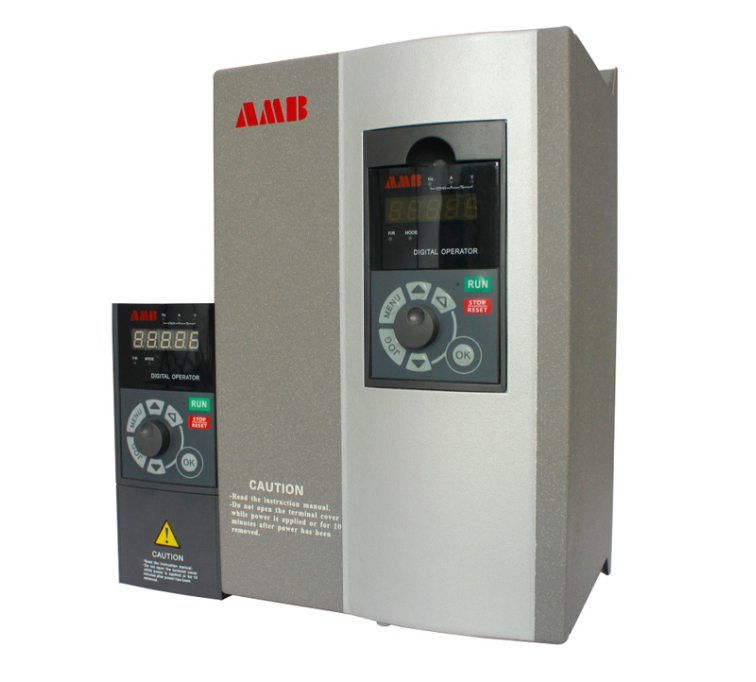
Theory and practice have proved that frequency conversion technology in air conditioning system has significant energy saving effect. In this paper, through consulting a large number of references, combined with the author's practical work experience, the control principle of variable frequency speed regulation technology and its application in air conditioning system are deeply studied. This paper first describes the basic control principle of air-conditioning frequency conversion technology, and focuses on the structural principle of "AC-DC-AC" inverter; secondly, it focuses on the advantages of variable-frequency air-conditioning, such as saving electric energy, better voltage adaptability, faster cooling speed and better comfort; finally, the author introduces the control system of variable-frequency air-conditioning and the automatic control principle of variable-frequency governor It is discussed.
With the continuous development of economy and society, global warming should become an environmental problem that every country needs to face, which leads to the increasing demand for air. In today's energy shortage, how to reduce the energy consumption of air conditioning system in the use process has become an important issue in air conditioning design. In recent years, the application of air conditioning frequency conversion technology in air conditioning control system is an important means of energy saving and emission reduction. This paper mainly studies the frequency control technology and related energy-saving principle, and expounds the application of this technology in the central air-conditioning system.
1. Frequency conversion technology of air conditioning system
As the name suggests, the core component of the frequency conversion system is the frequency converter. The so-called frequency converter is an AC device that converts the power frequency AC provided by the power grid into the AC motor with variable voltage and variable frequency for variable frequency speed regulation of AC motor. The "AC-DC-AC" frequency converter is often used in the variable frequency speed regulation system.
"AC-DC-AC" inverter structure schematic diagram mainly includes the following four parts: 1) rectifier: the main role of this device is to convert DC into AC. Generally, rectifiers are mainly divided into two types, one is the uncontrollable rectifier composed of silicon rectifier elements, and the other is the controllable rectifier composed of thyristor elements. 2) Intermediate DC link: the main purpose of this part is to ensure that the inverter circuit and control circuit can get better AC power supply. 3) Inverter: the main function of inverter is to convert DC into AC device with adjustable frequency and voltage. Inverter is the core component of frequency converter. At present, the main power components used are common thyristor, high power transistor and power field effect transistor. 4) Control circuit: according to the different control methods of frequency conversion and speed regulation of air conditioner, corresponding control commands are generated to control the working state of various power components in the power inverter, so as to enable the inverter to output predetermined power and voltage.
2. Advantages of variable frequency air conditioning
According to the control structure and characteristics of air conditioning frequency conversion system, coupled with the extensive development of electronic technology and computer control technology, the application of frequency converter in air conditioning is increasingly extensive. The emergence of frequency conversion technology makes the air conditioning to meet the design requirements, but also to achieve the effect of energy saving. Compared with ordinary air conditioning, the application of frequency conversion technology in air conditioning control system has the following advantages:
(1) The air conditioner with frequency conversion technology can save electric energy and has good voltage adaptability. In the process of starting the air conditioning compressor, the low-frequency starting mode is adopted to start the compressor, which reduces the starting current and power consumption. After the air compressor starts quickly, it changes from low frequency to high frequency, and reaches the set temperature in a short time. After that, the compressor works at low frequency for a long time to ensure the indoor temperature.
(2) The refrigeration speed of inverter air conditioner is fast and the comfort is good. After low frequency start-up, the air-conditioning unit quickly enters into high-speed operation, and the speed can reach 2-3 times of the normal speed. Therefore, compared with the constant speed air-conditioning, the variable-frequency air-conditioning can quickly reach the set temperature. When the indoor temperature reaches the set temperature, the room temperature can be adjusted by adjusting the speed of the compressor.
(3) The defrosting speed is fast and can realize ultra-low temperature heating. In a low temperature environment, the defrosting of ordinary air conditioning needs to be shut down for about 15 minutes, and the indoor heating is stopped during this period. However, for the inverter air conditioner, due to the use of microprocessor to control the electronic expansion valve, in the process of defrosting, the electronic expansion valve is fully opened, the air compressor runs at high speed, and the residual heat of the compressor is used to defrost. Secondly, when the outdoor temperature is lower than zero, the heating capacity of the general air conditioner will be greatly reduced.
3. Control system of frequency conversion air conditioner and automatic control of frequency converter
The control circuit of variable frequency air conditioner is mainly divided into indoor and outdoor parts.
The indoor control system of frequency conversion air conditioning mainly completes the acceptance of infrared signal remote control, and switches the power and frequency according to the set air conditioning operating state, and adjusts the indoor air speed and compressor speed, so as to meet the requirements of temperature setting. After receiving the signal, according to the plastering algorithm to get the best operation state, and then through serial communication with the outdoor unit to exchange information, to achieve the control of the compressor running state.
The main function of outdoor is to adjust the compressor, frequency conversion control mode and wind speed according to the infrared signal. At the same time, the waste heat generated by the compressor can also be used to defrost the air conditioning fan.
The frequency converter of air conditioner can be controlled manually or manually. Usually, the signal of automatic control is mainly 40-20ma weak current signal or 0-5V weak voltage signal. The pneumatic signal of the flow meter is converted into 4-20mA current signal through the conversion of the gas electric sensor. The speed of the motor is controlled by the control end of the frequency converter to change the flow. The pneumatic electric converter, three-way switch and pneumatic control valve in the figure can be omitted, so that the control system of frequency converter is greatly simplified. On the other hand, the control accuracy of the air flow is much higher than that of the starting control valve. According to the different requirements, the frequency converter can also adopt temperature control, pressure control and comprehensive control of various signals.
4. Summary
In this paper, through consulting a large number of references, combined with the author's practical work experience, the control principle of variable frequency speed regulation technology and its application in air conditioning system are deeply studied. This paper first describes the basic control principle of air-conditioning frequency conversion technology, and focuses on the structural principle of "AC-DC-AC" inverter; secondly, it focuses on the advantages of variable-frequency air-conditioning, such as saving electric energy, better voltage adaptability, faster cooling speed and better comfort; finally, the author introduces the control system of variable-frequency air-conditioning and the automatic control principle of variable-frequency governor It is discussed.

|
|

|
| The public, | Mobile station |
 0755-81719517
0755-81719517
|
|
 0755-81719530 0755-81719530 |
 amb@ambition.com.cn amb@ambition.com.cn |
 Floor 1, 5 and 6, building 7, lijincheng science and technology industrial park, gongye dong road, longhua new district, shenzhen Floor 1, 5 and 6, building 7, lijincheng science and technology industrial park, gongye dong road, longhua new district, shenzhen |
|